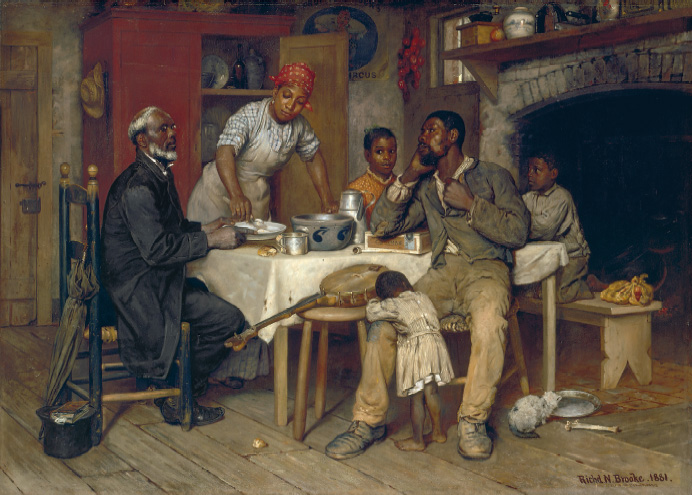1.2.1 Johnson’s Program of Reconciliation
Born in 1808 in Raleigh, North Carolina, Andrew Johnson was the son of illiterate parents. Self-educated and ambitious, Johnson moved to Tennessee, where he worked as a tailor, accumulated a fortune in land, acquired five slaves, and built a career in politics championing the South’s common white people and assailing its “illegitimate, swaggering, bastard, scrub aristocracy.” The only senator from a Confederate state to remain loyal to the Union, Johnson held the planter class responsible for secession. Less than two weeks before he became president, he announced what he would do to planters if he ever had the chance: “I would arrest them — I would try them — I would convict them and I would hang them.”
“Damn the negroes. I am fighting those traitorous aristocrats, their masters.”
— President andrew johnson
Despite such statements, Johnson was no friend of the Republicans. A Democrat all his life, Johnson occupied the White House only because the Republican Party in 1864 had needed a vice presidential candidate who would appeal to loyal, Union-supporting Democrats. Johnson vigorously defended states’ rights (but not secession) and opposed Republican efforts to expand the power of the federal government. A steadfast supporter of slavery, Johnson had owned slaves until 1862, when Tennessee rebels, angry at his Unionism, confiscated them. When he grudgingly accepted emancipation, it was more because he hated planters than sympathized with slaves. “Damn the negroes,” he said. “I am fighting those traitorous aristocrats, their masters.” At a time when the nation confronted the future of black Americans, the new president harbored unshakable racist convictions. Africans, Johnson said, were “inferior to the white man in point of intellect — better calculated in physical structure to undergo drudgery and hardship.”
508

Like Lincoln, Johnson stressed the rapid restoration of civil government in the South. Like Lincoln, he promised to pardon most, but not all, ex-rebels. Johnson recognized the state governments created by Lincoln but set out his own requirements for restoring the other rebel states to the Union. All that the citizens of a state had to do was to renounce the right of secession, deny that the debts of the Confederacy were legal and binding, and ratify the Thirteenth Amendment abolishing slavery, which became part of the Constitution in December 1865.
Johnson’s eagerness to restore relations with southern states and his lack of sympathy for blacks also led him to return to pardoned ex-Confederates all confiscated and abandoned land, even if it was in the hands of freedmen. Reformers were shocked. They had expected the president’s hatred of planters to mean the permanent confiscation of the South’s plantations and the distribution of the land to loyal freedmen. Instead, his instructions canceled the promising beginnings made by General Sherman and the Freedmen’s Bureau to settle blacks on land of their own. As one freedman observed, “Things was hurt by Mr. Lincoln getting killed.”